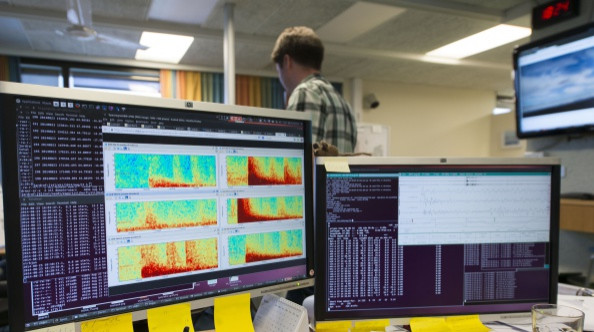Iceland Backtracks on Bárðarbunga Volcano Eruption

Iceland has retracted its statement from yesterday (23 August) and the Meteorological Office has reduced the aviation alert color code from red back down to orange, reported Bloomberg.
Iceland's authorities had raised the country's aviation warning code to red yesterday, (23 August) with a red code implying significant quantities of ash are likely to be released.
A team of scientists flew over the area yesterday and that revealed that there wasn't an eruption taking place or any floods coming from the glacier. However, there's a lot of seismic activity in the glacier despite there being no visible signs of an eruption.
Urdur Gunnarsdottir, a spokeswoman for the Civil Protection Agency, said today (24 August): "A team of scientists flew over the area yesterday [23 August] and that revealed that there wasn't an eruption taking place or any floods coming from the glacier.
"However, there's a lot of seismic activity in the glacier despite there being no visible signs of an eruption."
Authorities are frequently monitoring activity near the Bárðarbunga volcano, which is located underneath Europe's largest glacier, Vatnajökull.
Icelandic Met Office said today (24 August):
"There are no indications that the activity is slowing down, and therefore an eruption cannot be excluded. Observations show that a sub-glacial eruption did not occur yesterday. The intense low-frequency seismic signal observed yesterday has therefore other explanations.
"Probably, earthquakes near the Bardarbunga caldera are a consequence of adjustment to changes in pressure because of the flow of magma from under the caldera into the dike, which stretches to Dyngjujokull, more than 25 kilometers away. No signs of tremor, indicative of eruption, were detected during the night."
Airlines are on high alert fearing a repeat of the 2010 Eyjafjallajokull volcano eruption, that had led to over 100,000 flight cancellations and a £1 billion loss in revenue.
Live Transmission
Míla, which is the hub of most telecommunications in Iceland, installed a second camera today (24 August) at Vaðalda, overlooking Bárðabunga and Dyngjujökull.
Live transmission can be seen here: http://www.livefromiceland.is/webcams/bardarbunga-2/
© Copyright IBTimes 2025. All rights reserved.





















